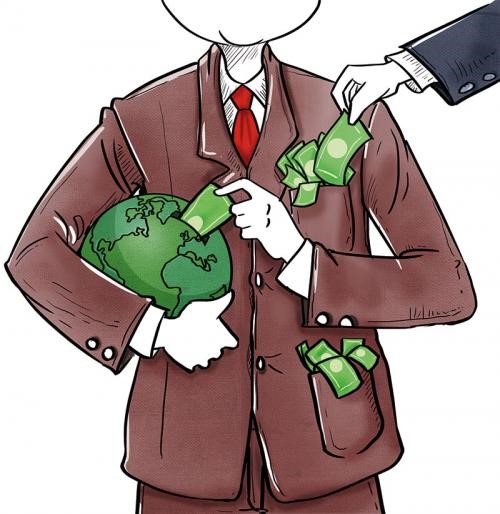Description

Disclaimer: Copyright infringement not intended.
Context
- Offering debt relief in lieu of climate action could allow rich countries to pay for their acts of historical injustice, while helping the poor ones manage mounting public borrowings and climate change challenges.
Background
- Countries prominently vulnerable to climate change and the loss of natural biodiversity are often the ones least able to afford the investment to strengthen resilience.
- This is because of their debt burden.
- Gradually, these factors combine to put the affected countries in jeopardy; they face prolonged fiscal crisis, which forces them to rely on the mercy and the aid of the international community to stay afloat.
- International organisations and multilateral development banks exercise multiple types of measures to help highly vulnerable countries survive financial catastrophes caused by climate change impacts.
- However, in the past decade, debt-for-climate swaps has grown relatively popular among low- and middle-income countries.

About debt-for-climate swaps
- Debt-for-nature swap first appears to have been used in the 1980s in Latin America, where the countries aimed to reduce unsustainable external debts and address worsening environmental conditions.
- The concept of debt-for-climate swap was also envisioned around the same time by then deputy vice-president of Worldwide Fund for Nature, a conservation group.
- A debt-for-climate swap is an agreement between the creditor and a debtor by which the former forgoes a portion of the latter’s foreign debt, or provides it debt relief, in return for a commitment by the government to invest in a specific environmental project to, say, decarbonise the economy, develop climate-resilient infrastructure, or protect biodiverse forests or reefs.
Working
- It was introduced as a debt restructuring device that aims to combat climate change by ensuring that debt-ridden countries do not incur additional debt while addressing climate change locally.
- In such cases, a new agreement would be worked out with a multilateral or bilateral partner to replace the terms of the initial loan agreement, which would direct the remaining debt on mutually agreed terms towards “green or blue” domestic investments.
Significance
- They seek to free up fiscal resources so that governments can improve resilience without triggering a fiscal crisis or sacrificing spending on other development priorities.
- They possess dual objectives: to promote specific investment and policy action on the one hand and some debt relief on the other.
- The utilisation of these swaps now stretches to finance enormous climate mitigation and adaptation projects.
Why creditor countries should engage in debt-for-climate swaps?
- The signatories to the Paris Agreement and the Glasgow Financial Alliance for Net Zero (GFANZ), a global coalition of financial institutions, have a commitment to provide financial assistance to developing countries to build clean, climate-resilient futures. Debt-for-climate swaps are one way to fulfil their commitments.
- Debt-for-climate swaps are attractive instruments due to their
- While they can reduce the level of indebtedness of a nation to private creditors or creditor nations, the concessional capital is assured to be directed to climate projects with third-party guarantors overseeing the escrow fund.

Why is it a hope for small island countries?
- The small island developing states (SIDS) are eyeing this innovative financial instrument to address the two challenges they face: adapting to increasing climate risk and recovering from financial distress.
- Servicing debt entails continuing payments, which diminishes national budgets for developmental projects, including adaptation to climate change and disaster risk reduction, further increasing their vulnerability to climate change.
- It is like being trapped in an endless circle of misery.
- In debt-for-climate swaps, bilateral and multilateral debt relief could enable SIDS to reduce their external debt while investing the liberated funds in national climate adaptation and mitigation programmes.
Success Stories
Seychelles
- In 2017, this small African country announced the successful conclusion of negotiations for a debt-for-adaptation swap under a tripartite model.
- The Nature Conservancy (TNC), a US-based environmental organisation, bought $22 million of its debt in exchange for a promise to create 13 new marine protected areas.
Belize
- In 2021, Belize, a country on the northeastern coast of Central America that is bordered by the Caribbean Sea to the east, reduced its debt by 10 per cent of its GDP and acquired funds to protect the world’s second-largest coral reef by striking a $553-million swap deal with TNC.
Sri Lanka
- Sri Lanka, which ranked in the top 10 countries most affected by climate-induced disasters from 2018 to 2020, is highly vulnerable to climate change catastrophes.
- The sovereign debt crisis in Sri Lanka in 2022 attracted worldwide attention.
- According to UNDP, Sri Lanka owes approximately $45 billion in long-term debt to creditors, which requires immediate financial assistance.
- The island country has already benefited from 16 IMF bailouts and is currently negotiating the 17th.
- However, bailouts have three pre-requirements: financing packages, “structural reforms,” and macroeconomic conditions, all of which will require significant policy changes.
- Sri Lanka therefore is in talks for a debt-for-nature swap deal of up to $1 billion in climate-focu-sed finance.
|
PRACTICE QUESTION
Q) Debt-for-nature swap allow rich countries to pay for their acts of historical injustice, while helping the poor ones manage mounting public borrowings and climate change challenges. Comment. (150 words)
|

https://www.downtoearth.org.in/news/environment/here-is-all-you-need-to-know-about-debt-for-climate-swaps-88653












